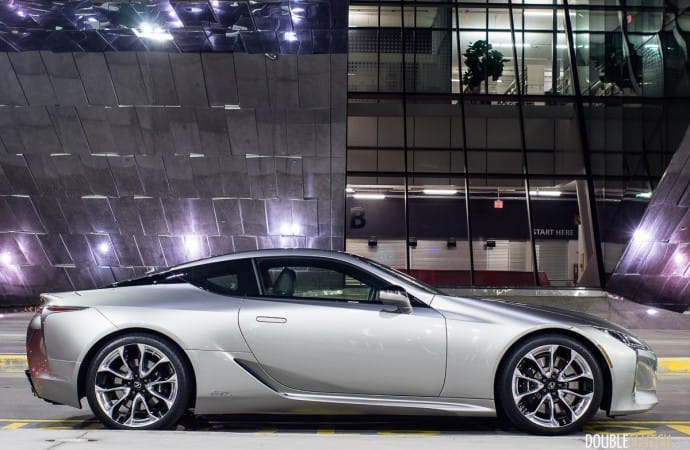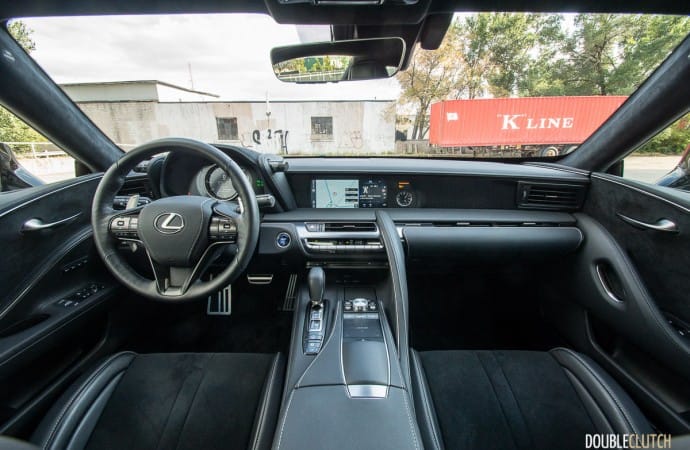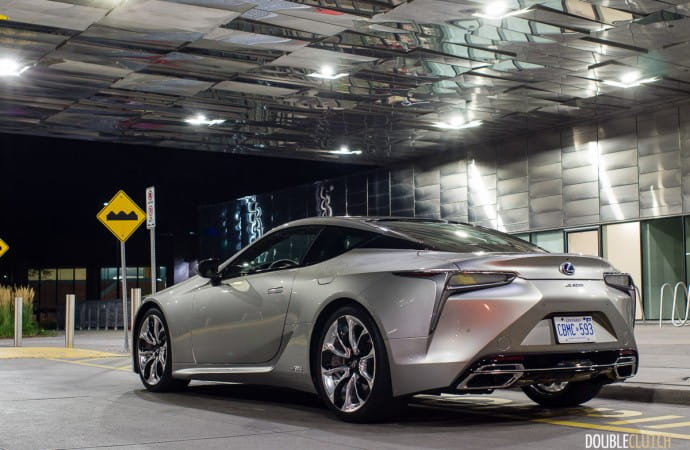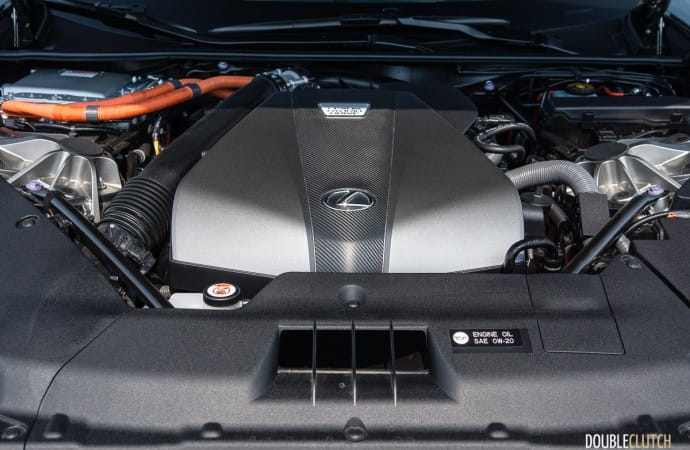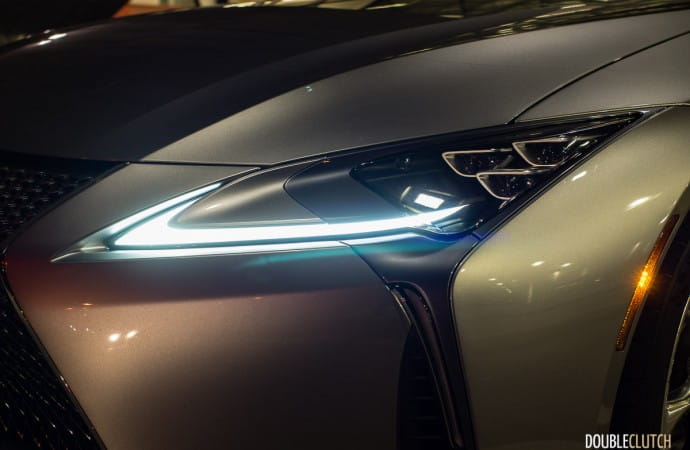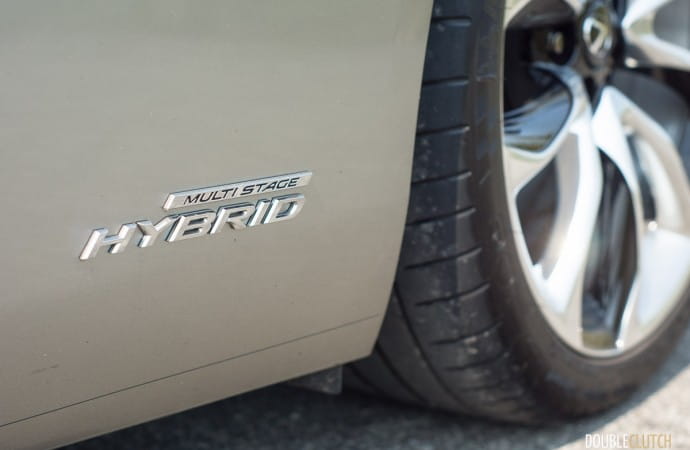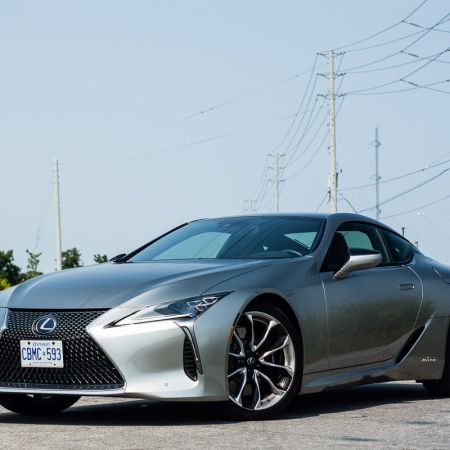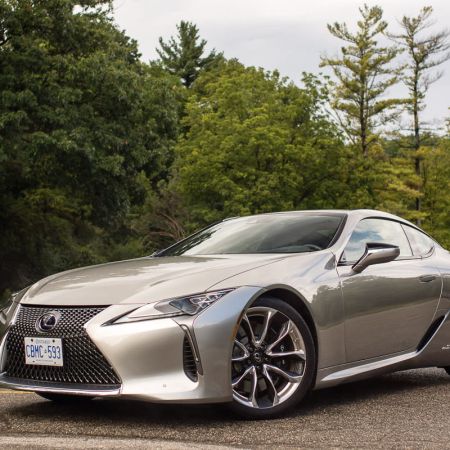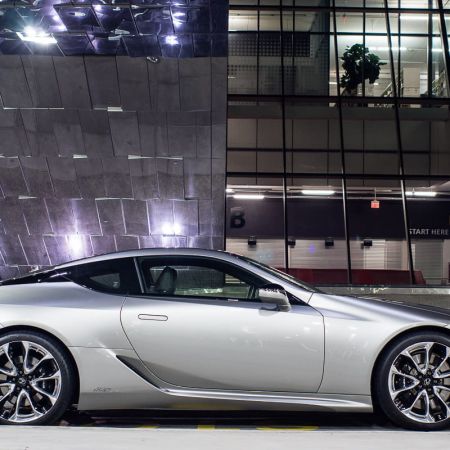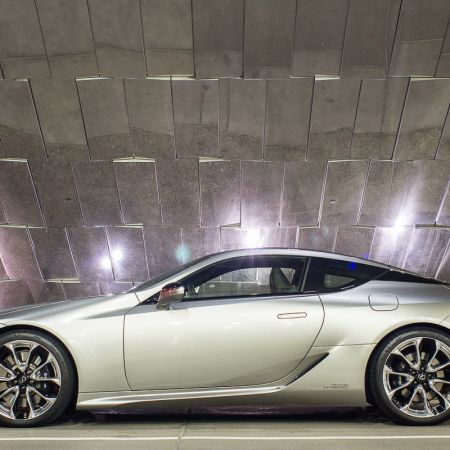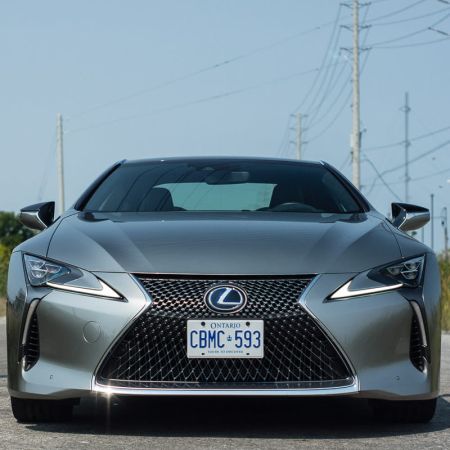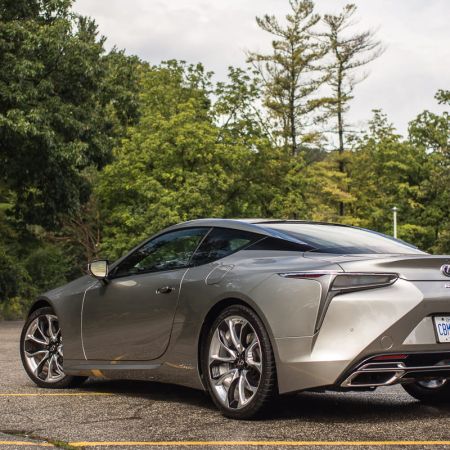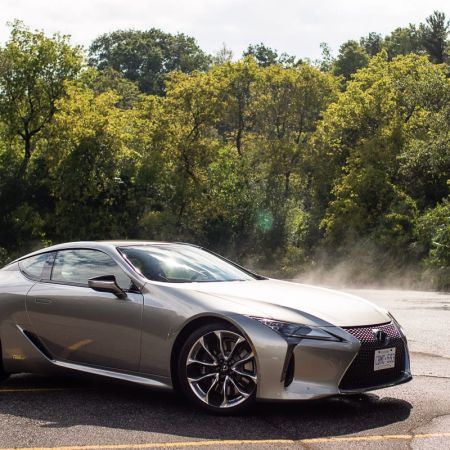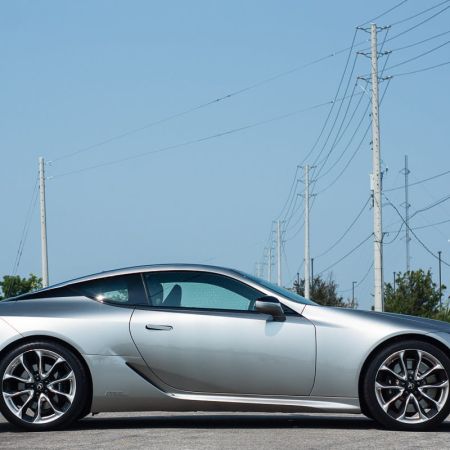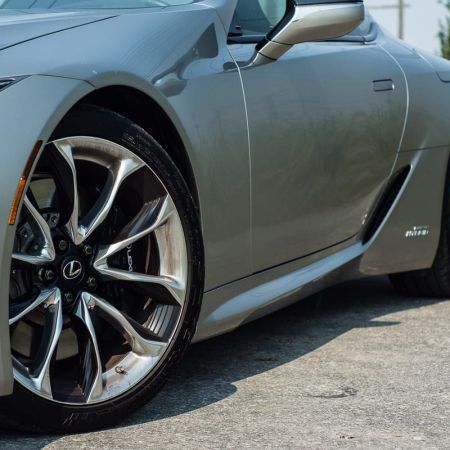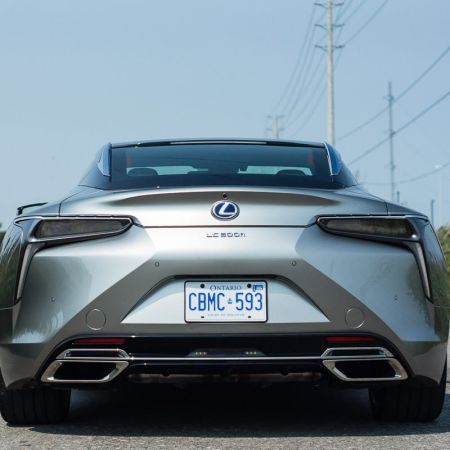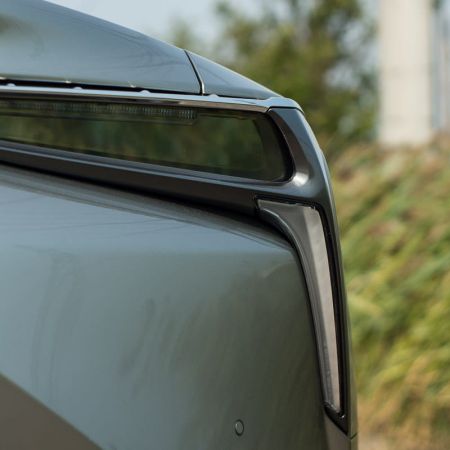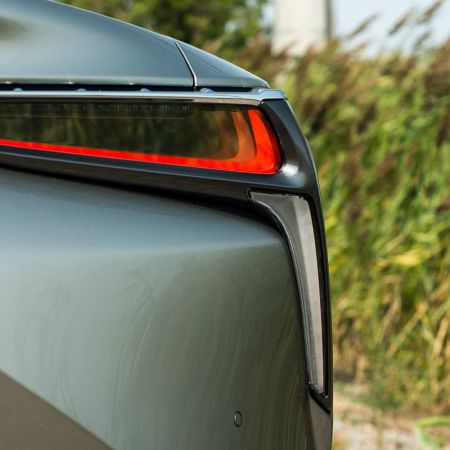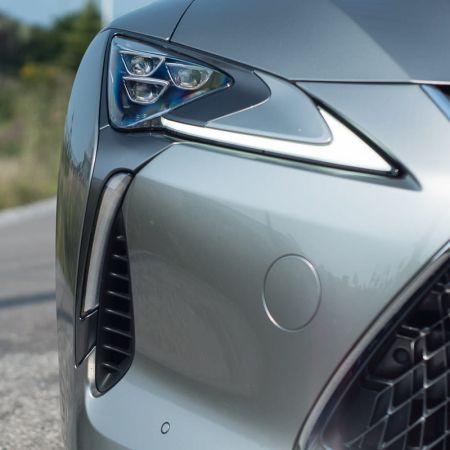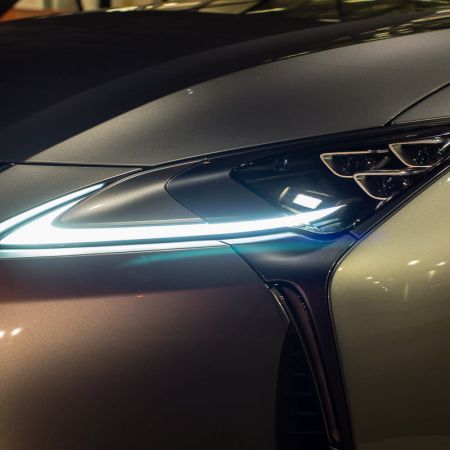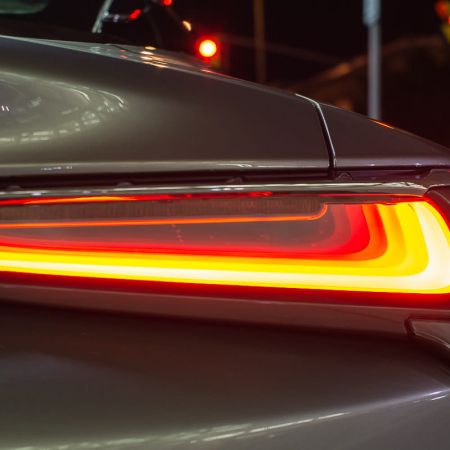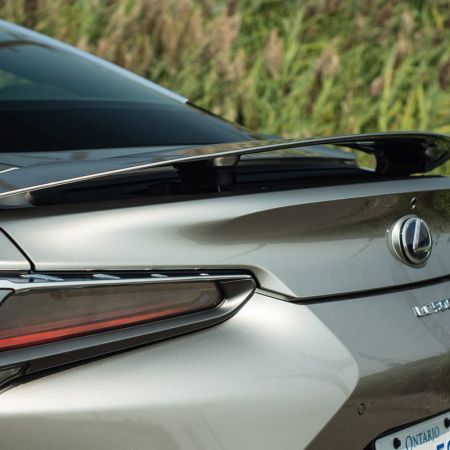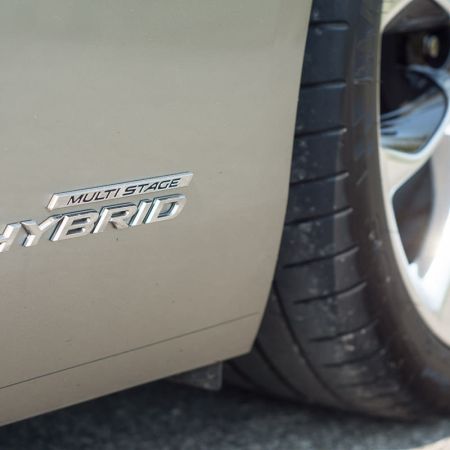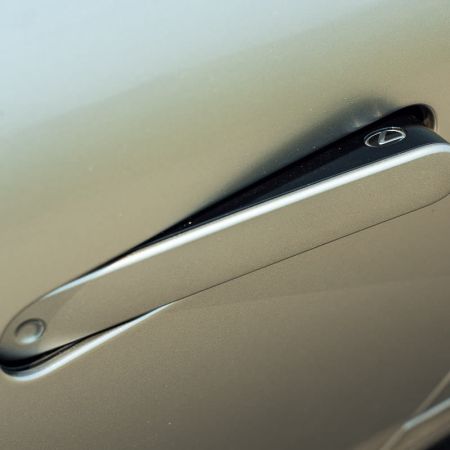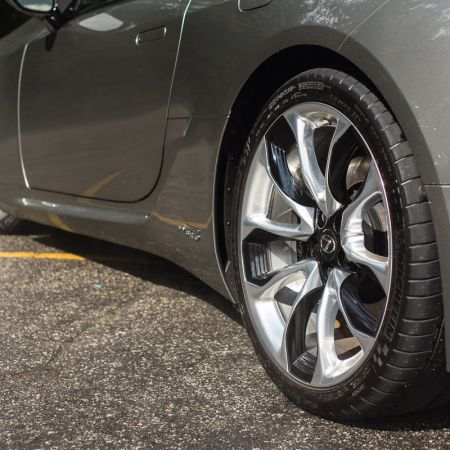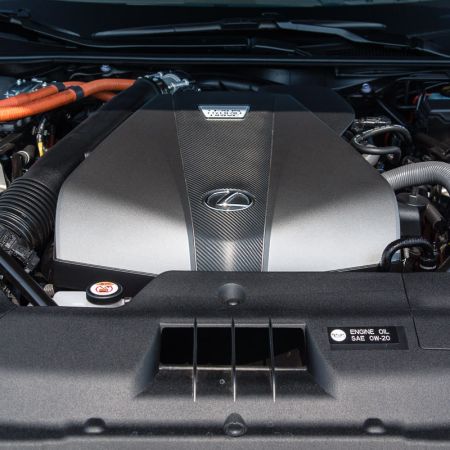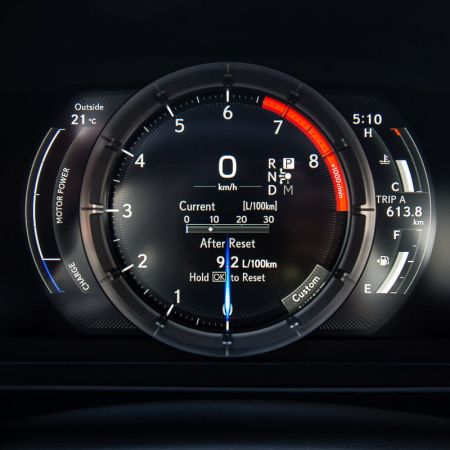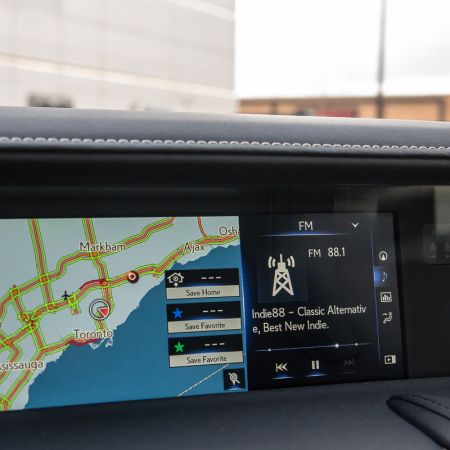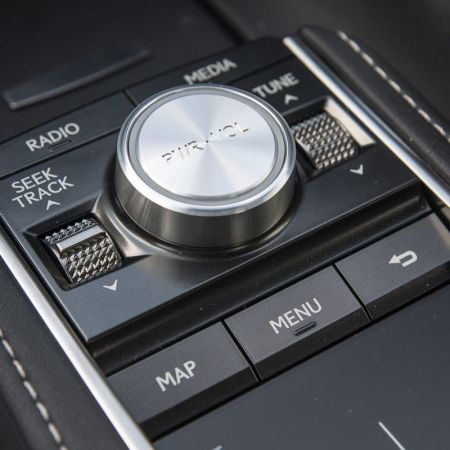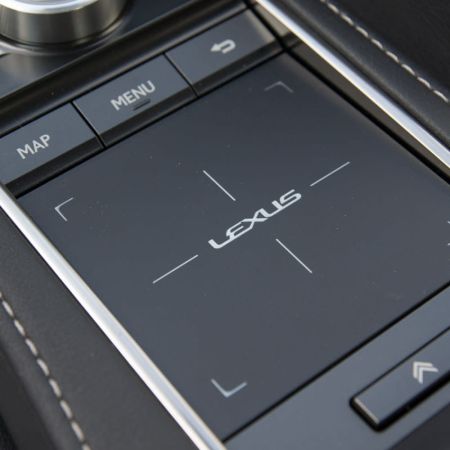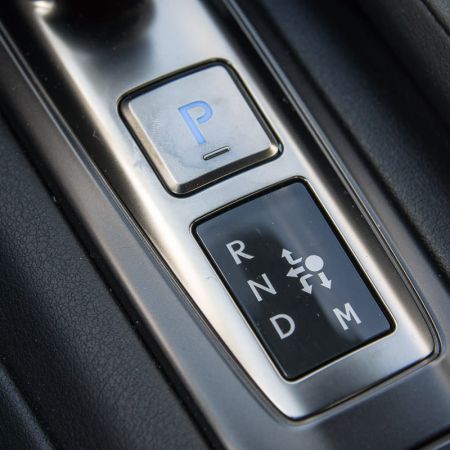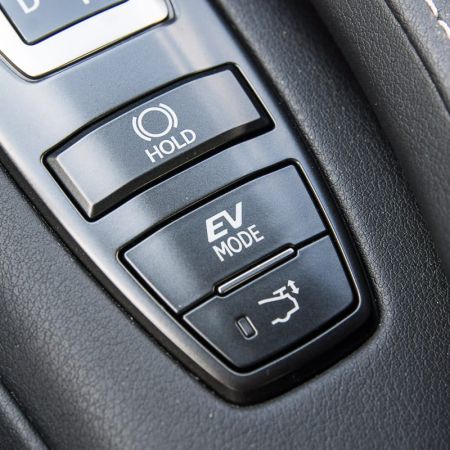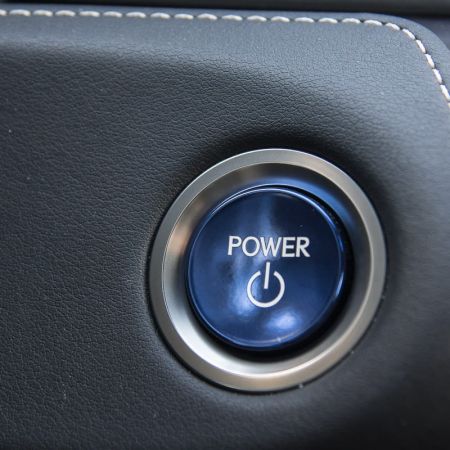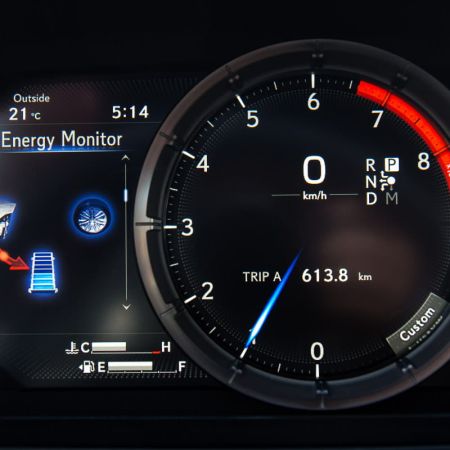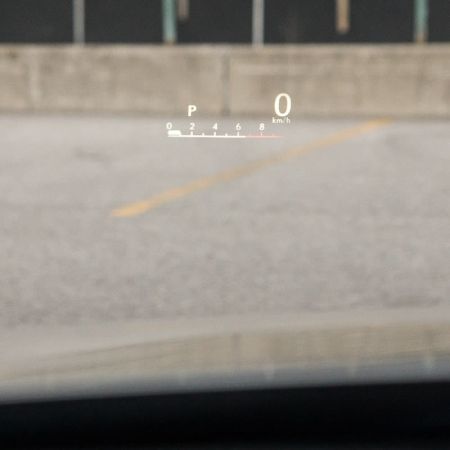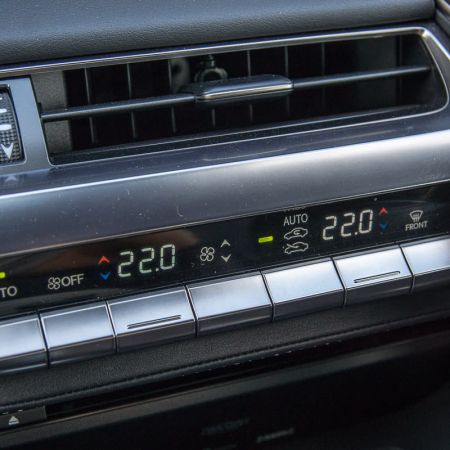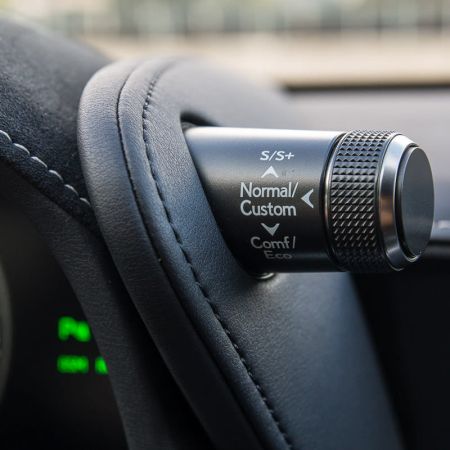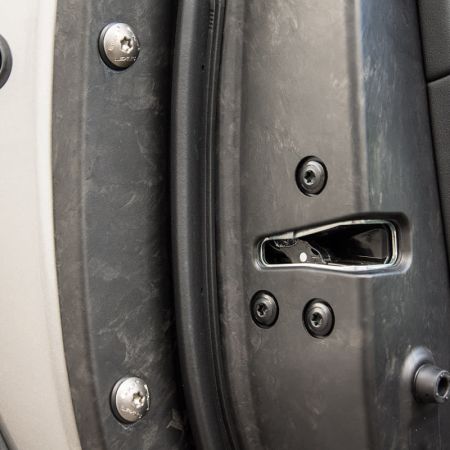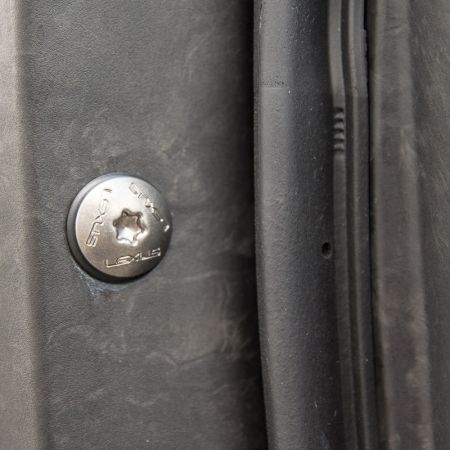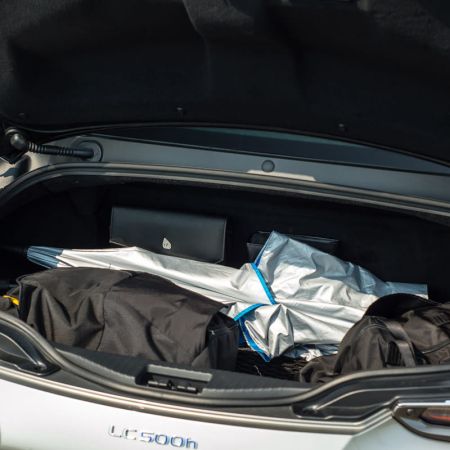Cars and trucks have become an exercise of design, regardless of the price tag attached to them. Even cars like the Honda Civic gets a design that some even say may be a bit too much. In other words, expressive and progressive design doesn’t necessarily need to be associated with hefty price tags anymore. Some of these new designs really push the envelope in how cars are viewed, and they also push the envelope in metallurgy and material design. Lexus has been a brand that has been viewed as being too conservative, and too daring – sometimes at the same time.
The Lexus SC was their flagship coupe about ten years ago, with the RC (reviewed here) taking over – but not necessarily replacing it – recently. Part of the new-product assault coming from Lexus sees the introduction of a new flagship two-door coupe – a real flagship this time. Enter the Lexus LC, a new purpose-built “GT car”, set to share duties with the upcoming LS sedan. There are two versions of the LC: a standard LC 500, which is powered by a delicious 5.0L V8, and the LC 500h, which adds hybrid electrification to the mix. I spent a beautiful week behind the wheel of a beautiful Atomic Silver 2018 Lexus LC 500h. The gasoline LC 500 is one of the best cars I’ve driven all year, but will the hybrid make me feel the same way?
First things first: just look at it. Even in what is essentially a variant of beige, the Lexus LC is simply stunning to look at. While styling is highly subjective, I think this is one of the most striking vehicles I’ve driven in a long time. There’s so much going on, and little details come together to create a look that feels far more expensive than it actually is. The Spindle Grille makes yet another appearance, but this time, there’s something different about it: the criss-cross pattern in the grille actually makes up a gradient. The headlights are of the full-LED variety, and the amber turn signals cut into them in such an organic way. The vertical drop in the headlights also happens to pay homage to the wacky style of the Toyota Prius (reviewed here).
The side profile is made up of many subtle character lines and contours, and it is amazing to see how they all reflect light differently. The “floating” roof first seen on the Lexus RX appears here, but the effect is quite subtle. The taillights get their own talking point: when they are off, they appear silvery. However, at night, clever use of reflective surfaces produces an infinity-effect that makes the tail light elements progressively disappear into a dark abyss. The wheels on this particular tester are huge – 21-inches with 245-section summer rubber up front, and 275-section in the rear. In this case, the LC rides on the excellent Michelin Pilot Super Sport summer tire. The design of the wheels leaves a bit to be desired. They are fairly “busy” looking, and don’t flow the same way the rest of the body does.
The Lexus LC 500h got a lot of attention throughout my week. Those who knew exactly what it was, asked whether it was the V8, or if it was the hybrid. What I love about the LC is the concept car look that exists in mass production. Its styling alone will attract many to the brand – or at the very least, raise awareness of what Lexus is willing to do. There’s some discussion regarding how the styling punches well above its weight: people have even dropped the Aston Martin comparison at times, and it is a completely reasonable assertion. The DB11 is also a GT car that features a few slightly similar styling elements. As subjective as it is, the fact that Aston Martin is even in the conversation is worth a few points to the Lexus LC 500.
After you pop open the electric door pulls (similarities to Jaguar here) and settle down into the gorgeous contoured seats, you’ll soon realize that just like the exterior, the Lexus LC has a lot going on inside. The sheer amount of varying materials that cover every surface is something to really appreciate. There’s soft leather, alcantara, matte-finished metallic surfaces, softly backlit plastic, and the list goes on. The attention to detail is simply astonishing – even in something as mundane as the interior door handle you pull to open the door. The way it sprouts out of the incredibly complex door card is something that always deserves a second look. If you examine the door structure itself, you’ll notice it is made up of carbon fibre reinforced composite, which is strong, yet light. The stainless-steel fasteners used to hold the door together are even branded with the Lexus logo. Take a look at the shock tower reinforcements under the hood – it is details like this that continue to blow people away.
There are three different interior colours to choose from: the standard black (as this one is equipped with), Rioja Red, and my personal favourite – Ocher Alcantara. It is this last colour choice that does the best job at showing off all the contours and contrasting materials of the interior. The volume knob for the 13-speaker Mark Levinson audio system resides ahead of the Prius-style gear selector, and it is damped in a way that makes it feel like turning the volume knob on a nice piece of home theatre equipment.
In short, the Lexus LC really is a special place to spend time. The only quirk that comes up is the 10.3-inch infotainment interface. Lexus’ trademark mousepad makes a return, but is enlarged for ease of use. One particular function: the heated and ventilated seat controls – are buried deep within the climate control menus. The assumption here is because an additional array of buttons and switches would negatively affect the overall interior look and feel. Score one for the designers – at the expense of usability. Thankfully, the automatic seat heating/ventilation setting works well enough.
The standard Lexus LC 500 with its bellowing gasoline V8 is a special car, with its soulful audio soundtrack and generous 471hp power output. Right away, the LC500h is at a disadvantage, with only 354hp of total system power. Under the hood, lives an updated and longitudinally-mounted 3.5L V6 gasoline engine, codenamed 8GR-FXS. It is enhanced with electric motors and lithium-ion batteries (as opposed to nickel metal hydride as seen in other Lexus hybrids), to make up the well-known Hybrid Synergy Drive system. Unlike most other current Lexus and Toyota hybrids, the transmission isn’t like anything else on the market. Called the Lexus “Multi-Stage Hybrid”, it is essentially two transmissions put together. There is the usual power-split planetary CVT automatic, but embedded in the case, also lives a traditional four-speed automatic transmission.
The CVT automatic does its best at providing a wide gear ratio spread for optimum efficiency and performance, and the embedded four-speed automatic combines its ratios with the electronic wizardry that is the CVT, to give you “ten” stepped gear ratios. During typical cruising, the transmission does an extremely convincing job of giving you that dynamic multi-stepped gearing “feel”, but if you push the accelerator to the floor, the CVT behaviour becomes more prominent, with engine revs staying close to redline, and subtle “steps” along the way as the gasoline engine and electric motors work together.
Part of what makes the Lexus LC 500 so special is its deep, baritone, and muscular V8 soundtrack. The hybrid-electric V6 in the LC 500h sounds like a V6 (no surprise), so it immediately loses points with those who expect drama and excitement with their futuristic-looking flagship coupe. What you do gain, however, is much improved fuel efficiency. Rated at 8.9L/100km in the city, and an excellent 7.0L/100km on the highway, the LC500h is a whopping 40% better in the city, and almost 25% better on the highway, based on the estimates. During my week of mixed city and highway driving, I ended up with an indicated average of 9.0L/100km. The Lexus LC 500h isn’t a hypermiler’s car – the 2130kg (4435lbs.) curb weight is a good indicator.
One thing that doesn’t seem to go with the hefty curb weight is how the LC handles. As it is generally accepted: it isn’t much of a sports car, but rather a comfortable grand tourer. What I didn’t expect is how it handles – the way it turns in is quite impressive. The electric power steering rack delivers a decent amount of road feel, but it isn’t just tuned with an aggressive initial turn-in, as that would make the whole car quite jittery under normal street driving. You can thank the super-rigid body structure for allowing the suspension to do what it needs to do. Ride quality is also excellent, even considering the low-profile summer tires. The Sport and Sport+ mode firm up steering effort, transmission calibration, and damper settings, all while changing the appearance of the digital instrument cluster.
The Lexus LC 500 starts at $101,600 for the base model, but the Performance Pack quickly bumps that price to $115,100. The LC 500h, on the other hand, comes fully loaded at $118,100 (as tested). It already comes equipped with most of the items from the Performance Package, such as the carbon fibre roof, Torsen limited-slip differential, power retractable rear spoiler, sport seats, stickier tires on 21-inch forged aluminum wheels, and more. The LC isn’t the most expensive vehicle in the Lexus lineup – the flagship LS sedan still remains at the top (the LS460L AWD is $130,750). However, the dashing looks of the LC may as well take over, until it can share the duties with the next-generation LS. Elsewhere on the market, BMW’s i8 (reviewed here) is a progressively-modern fashion statement.
The design of the Lexus LC, inside and out, is what defines it. It is one of the most striking touring cars around, regardless of the price tag. Attention to detail, the subtle design cues, and even the shouty design cues, all come together in a design that is cohesive in the way Lexus does best. I’ve mentioned several times the stark difference in personality between the LC 500 and LC 500h, that it should really be obvious by now: if you like the exciting soundtrack of one of the best sounding naturally-aspirated V8 engines available today, the LC 500 may be more up your alley.
On the other hand, it seems easy to dismiss the 2018 Lexus LC 500h as just being the “slow” version. If you look at it as more of a “Technology Showcase”, the LC 500h begins to make a lot more sense. You get the best balance of hybrid electric efficiency, and you get to live on the leading edge of the Toyota family’s Hybrid Synergy Drive engineering. To some, being on the forefront of powertrain technology is worth more, whether it’s from an efficiency standpoint, or even just keeping-up-with-the-Joneses with the blue “h” affixed to the rear end. You don’t even have to give up too much straight-line speed to get it. The Lexus LC500h really is a special car, in the way it makes you feel special. The LC500 just happens to have more of that mojo.



